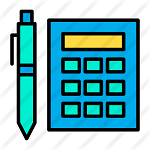
These modules enable the hospital software to communicate and share data with other healthcare systems, such as those used by pharmacies, insurers, and other healthcare providers. This ensures that patient data is accessible and consistent across the continuum of care. Interoperability and Integration Modules enable the exchange of patient data, clinical information, and administrative data between different systems, such as Electronic Health Records (EHR), Pharmacy Information Systems (PIS), Laboratory Information Systems (LIS), and Radiology Information Systems (RIS). By integrating disparate systems and applications, interoperability and integration modules ensure that healthcare providers have a comprehensive view of patient information, enabling them to provide coordinated and high-quality care. This improves patient outcomes and enhances the patient experience.
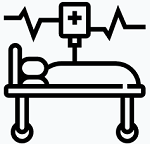
This component assists healthcare providers in making clinical decisions by offering suggestions or recommendations based on available patient data and medical literature. It aids in diagnosis, treatment, and patient management, and plays a vital role in improving patient outcomes, streamlining workflows, and reducing medical errors. These systems use patient data and medical knowledge to provide healthcare providers with relevant information and recommendations at the point of care. CDSS can help reduce medical errors by flagging potential problems, such as drug interactions or contraindications before they occur. For example, a CDSS can alert a physician if a prescribed medication is known to interact adversely with a patient's existing medications, allergies, or medical conditions, thus preventing a potentially harmful situation./p>
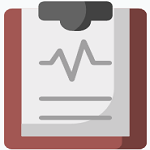
Appointment scheduling is a critical function of hospital software that ensures patients receive timely care while optimizing resource utilization and administrative efficiency. Helps manage patient appointments, physician schedules, and room availability. It may also send appointment reminders to patients via email or SMS. Hospitals can manage resources, such as medical equipment, rooms, and staff, to ensure that all appointments are scheduled efficiently and effectively.
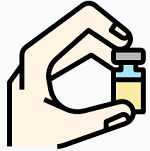
refers to the integrated functionality within the software that supports the efficient management of laboratory processes and operations in a healthcare facility. This feature enhances the workflow of laboratory technicians, improves accuracy in test results, and ensures seamless integration of lab data with the patient's electronic medical record (EMR). The software tracks the movement and status of samples from collection to analysis, ensuring traceability.
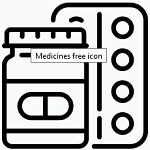
This component helps hospitals manage their inventory of medical supplies and pharmaceuticals. It tracks stock levels, expiration dates, and usage rates to optimize inventory levels and prevent shortages. An IMS helps in minimizing wastage and redundant inventory, which can lead to cost savings. By managing inventory levels effectively, hospitals can reduce the risk of overstocking or stockouts, thereby ensuring that they have the right quantity of supplies at the right time, thus avoiding unnecessary expenses. Having the right supplies and medical equipment available when needed is crucial for providing quality patient care. An IMS ensures that hospitals have sufficient stock of medicines, medical equipment, and other essential items, helping to avoid delays in treatment and improving patient outcomes.
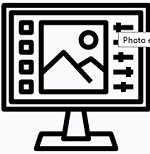
Clinical notes and documentation play a vital role in patient care and communication among healthcare providers. clinical notes and documentation systems are critical components of hospital software that support comprehensive patient records, improve communication among healthcare providers, facilitate legal and ethical compliance, promote evidence-based care, assist clinical decision-making, streamline workflow, and support continuity of care. This component allows healthcare providers to document patient encounters efficiently and accurately. It typically includes templates and tools to capture subjective and objective data, assessment, plan, and other relevant information. Clinical notes and documentation systems enable healthcare providers to maintain comprehensive and accurate patient records. This includes patient history, diagnoses, treatment plans, medications, and other relevant information, providing a complete picture of the patient's medical history.

These systems manage and track lab and radiology orders, results, and reports. They often integrate with other hospital systems to ensure that clinical data is easily accessible to healthcare providers. LIS and RIS are essential components of hospital software that play a crucial role in managing and organizing data related to laboratory and radiology procedures. These systems facilitate efficient management of tests and results, integration with EHR systems, reduction of errors, enhanced communication, regulatory compliance, efficient workflow, and clinical decision support. LIS and RIS enable healthcare providers to efficiently manage laboratory and radiology tests, ensuring that tests are ordered, conducted, and reported accurately and promptly. This helps streamline the testing process and ensures timely delivery of results to healthcare providers.

This component helps hospitals manage their inventory of medical supplies and pharmaceuticals. It tracks stock levels, expiration dates, and usage rates to optimize inventory levels and prevent shortages. An IMS helps in minimizing wastage and redundant inventory, which can lead to cost savings. By managing inventory levels effectively, hospitals can reduce the risk of overstocking or stockouts, thereby ensuring that they have the right quantity of supplies at the right time, thus avoiding unnecessary expenses. Having the right supplies and medical equipment available when needed is crucial for providing quality patient care. An IMS ensures that hospitals have sufficient stock of medicines, medical equipment, and other essential items, helping to avoid delays in treatment and improving patient outcomes.
© 2023 Softeye Solutions Ltd. All Rights Reserved | Design by W3layouts